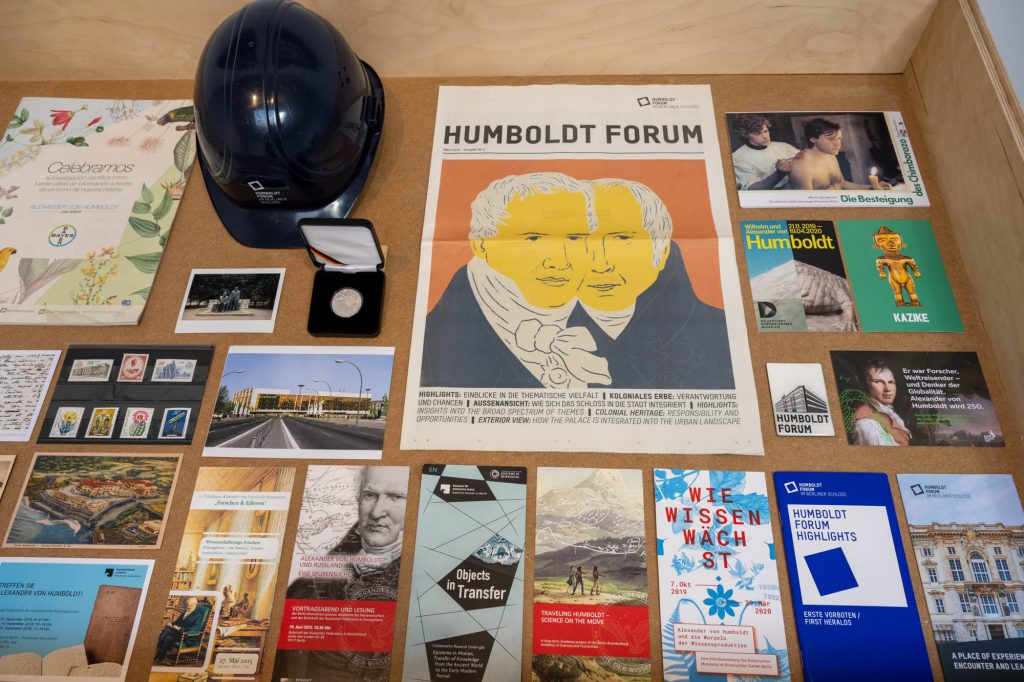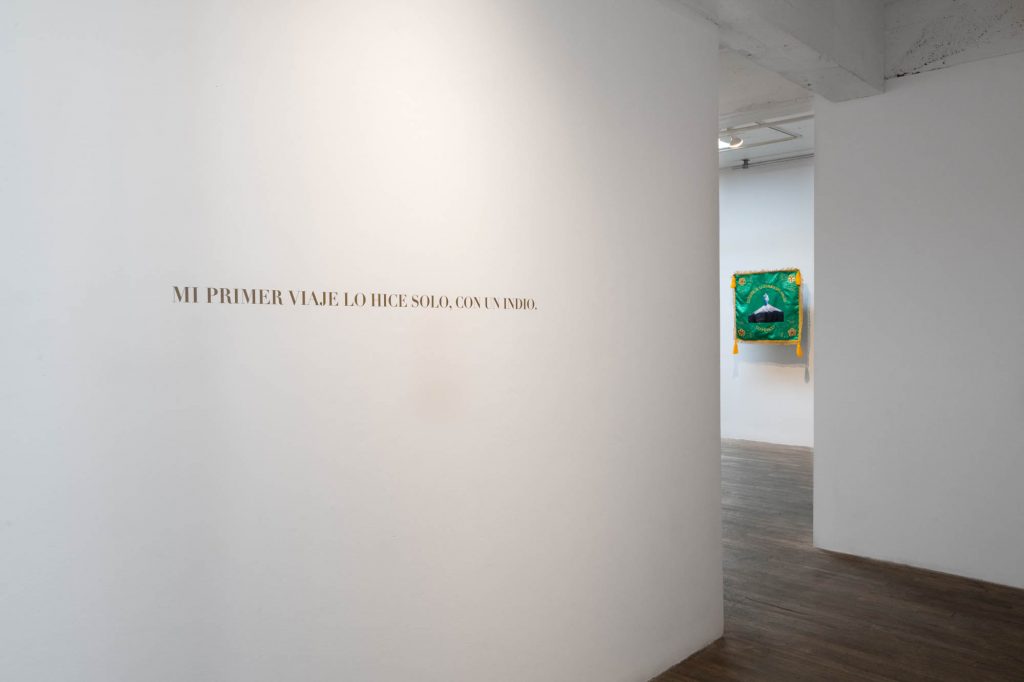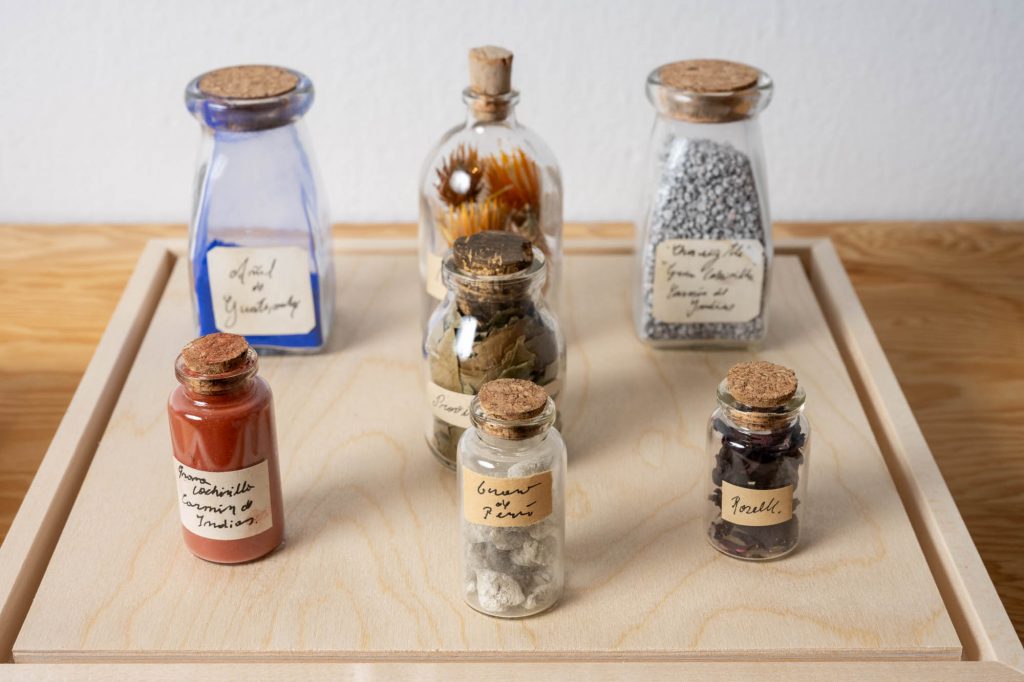Fabiano Kueva Archive Alexandre de Humboldt Montréal

Fabiano Kueva, Pyramide de Teotihuacan, 2019. Photo : Hervin Agular. © Archivo Alexander von Humboldt
For over ten years, artist Fabiano Kueva (Ecuador) has been building a vast archive by appropriating the strategies of 19th-century scientific travelers, such as walking, mapping, journaling, correspondence, landscaping and the collection of natural and cultural specimens. Taking as his point of departure the voyage of German explorer-naturalist Alexander von Humboldt between 1799 and 1804 through regions now known as Venezuela, Colombia, Ecuador, Peru, Mexico, Cuba and parts of the USA, Kueva re-enacts this journey in performances that become the subject of a film. At the same time, he builds up an impressive collection of artifacts, botanical specimens, journals and images, found or simulated, whose presentation in the form of an installation calls into question the imperialist viewpoint that guided the scientific inventory of the territory by travelers such as Alexander von Humboldt. In a way, the aim is to make visible the grey areas where complex relations between power and knowledge are played out.
The first parts of the project were presented in Quito, Lisbon, Mexico City, Berlin, Cuenca and Bogota. Archive Alexandre de Humboldt Montréal, conceived in collaboration with curator Emmanuelle Choquette, brings the journey to a close, linking South, Central and North America. This Montreal iteration aims to continue enriching the dialogue between the Americas, addressing ecological perspectives beyond coloniality, the politics of archives and museum collections, and artists’ questioning of hegemonic discourses, notably through performative strategies.
The artist and curator would like to thank the Canada Council for the Arts for its support. Thanks also to Artexte and the Herbier Marie-Victorin for the loan of furniture.

Fabiano Kueva, Pyramide de Teotihuacan, 2019. Photo : Hervin Agular. © Archivo Alexander von Humboldt
Fabiano Kueva (Ecuador, 1972) is an artist, curator and producer. Since the 1990s, he has developed a body of work and research as part of numerous art collectives and individual projects in sound art, installation and experimental video. He has published several books, articles and records. He has participated in theoretical events and international exhibitions in Latin America and Europe. Received 1st Prize at the International Radio Biennial (Mexico, 2000); the Paris Prize at the 9th Cuenca Biennial (Ecuador, 2007); the Best Feature Film Award at the Chiloé Film Festival (Chile, 2021); and the Acquisition Prize at the 15th Cuenca Biennial (Ecuador, 2021). He lives and works in Quito.
Emmanuelle Choquette is an author, researcher and independent curator. She holds a master’s degree in art history from UQAM, and is particularly interested in practices of archival appropriation that aim to rewrite hegemonic historical discourses and critically examine exhibition and curatorial formats. Her writing has appeared in the journals Espace art actuel, Vie des arts, le Sabord, Ciel Variable and esse art + opinions. She co-edited the publication Une bibliographie commentée en temps réel: l’art de la performance au Québec et au Canada (Artexte, 2019). Her collaborative curatorial projects have been presented at Drummondville’s Maison des arts Desjardins and at Artexte. She has participated in research residencies at Est-Nord-Est (St-Jean-Port-Joli) and Laboratorio Arte Alameda (Mexico City) in collaboration with OBORO. From 2013 to 2021, she was General Manager of Arprim, a test center for print art, where she coordinated an exchange between Mexican and Canadian artists.
© Fabiano Kueva, 2023

© Fabiano Kueva, view from the exhibition Archive Alexandre de Humboldt Montréal, 2023. Photo: Paul Litherland

© Fabiano Kueva, view from the exhibition Archive Alexandre de Humboldt Montréal, 2023. Photo: Paul Litherland

© Fabiano Kueva, view from the exhibition Archive Alexandre de Humboldt Montréal, 2023. Photo: Paul Litherland

© Fabiano Kueva, view from the exhibition Archive Alexandre de Humboldt Montréal, 2023. Photo: Paul Litherland

© Fabiano Kueva, view from the exhibition Archive Alexandre de Humboldt Montréal, 2023. Photo: Paul Litherland

© Fabiano Kueva, view from the exhibition Archive Alexandre de Humboldt Montréal, 2023. Photo: Paul Litherland

© Fabiano Kueva, view from the exhibition Archive Alexandre de Humboldt Montréal, 2023. Photo: Paul Litherland

© Fabiano Kueva, view from the exhibition Archive Alexandre de Humboldt Montréal, 2023. Photo: Paul Litherland

© Fabiano Kueva, view from the exhibition Archive Alexandre de Humboldt Montréal, 2023. Photo: Paul Litherland

© Fabiano Kueva, view from the exhibition Archive Alexandre de Humboldt Montréal, 2023. Photo: Paul Litherland

© Fabiano Kueva, view from the exhibition Archive Alexandre de Humboldt Montréal, 2023. Photo: Paul Litherland

© Fabiano Kueva, view from the exhibition Archive Alexandre de Humboldt Montréal, 2023. Photo: Paul Litherland

© Fabiano Kueva, view from the exhibition Archive Alexandre de Humboldt Montréal, 2023. Photo: Paul Litherland

© Fabiano Kueva, view from the exhibition Archive Alexandre de Humboldt Montréal, 2023. Photo: Paul Litherland

© Fabiano Kueva, view from the exhibition Archive Alexandre de Humboldt Montréal, 2023. Photo: Paul Litherland

© Fabiano Kueva, view from the exhibition Archive Alexandre de Humboldt Montréal, 2023. Photo: Paul Litherland

© Fabiano Kueva, view from the exhibition Archive Alexandre de Humboldt Montréal, 2023. Photo: Paul Litherland

© Fabiano Kueva, view from the exhibition Archive Alexandre de Humboldt Montréal, 2023. Photo: Paul Litherland

© Fabiano Kueva, view from the exhibition Archive Alexandre de Humboldt Montréal, 2023. Photo: Paul Litherland

© Fabiano Kueva, view from the exhibition Archive Alexandre de Humboldt Montréal, 2023. Photo: Paul Litherland

© Fabiano Kueva, view from the exhibition Archive Alexandre de Humboldt Montréal, 2023. Photo: Paul Litherland


